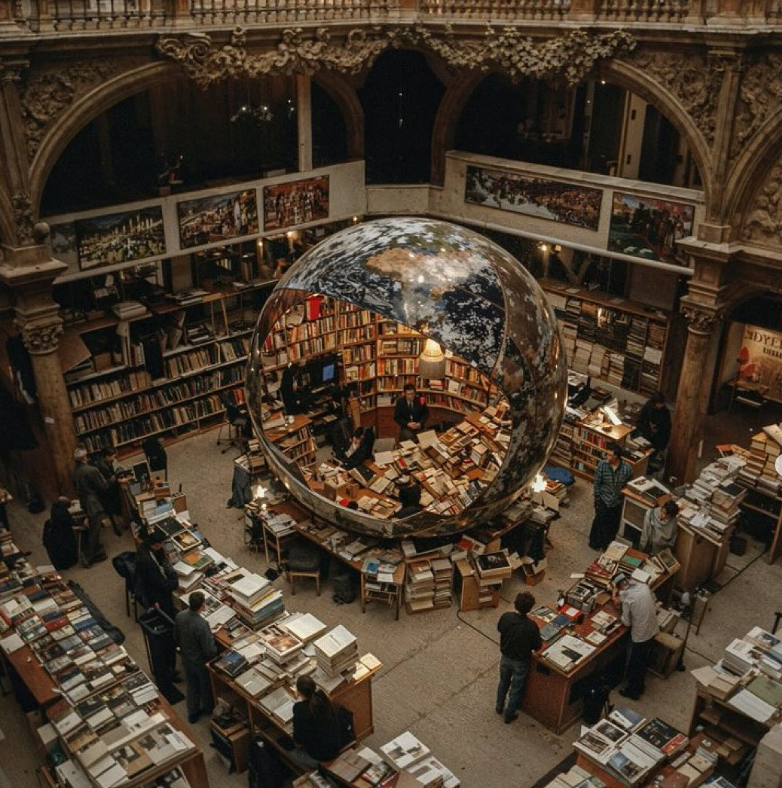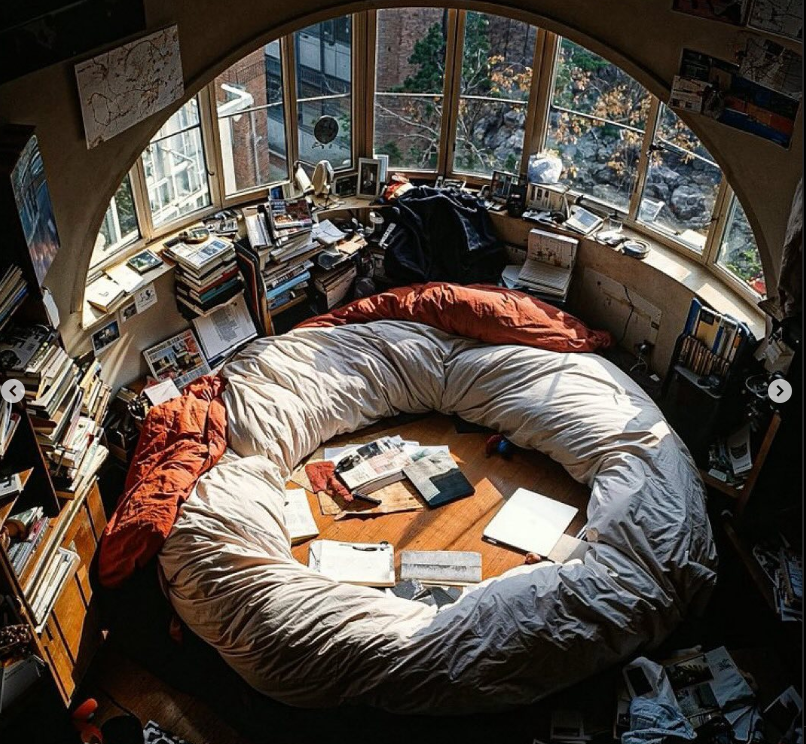When going through my day as a student, I am sometimes drawn to social media to pass time between classes and to chat with my pals, much like everyone else. A lot of the content I see on my Instagram other than my friends posts is primarily through various profiles I follow that I think post interesting things, so called “digital museums”. Each post is almost set up like an art exhibit, where they post photographs of various artworks, photographs, short-form content, and sometimes just things that are found on the internet that are interesting to the publisher.

Here one such example from one of the accounts I follow, showing portraits of wrongfully incarcerated civilians. On my day to day, I probably see 50-100 of posts like these from various creators. Most of the time, I end up stopping on a post for a few seconds, thinking to myself “oh wow”, and then continue scrolling. Sometimes can be very intriguing, but other times they fall short of captivating me. There is one post, however, that I remember shocked by, and it wasn’t because of the caption, it wasn’t because it had some deeper meaning, and it wasn’t because it was shock value, it was the way it was created.



Each of these pictures are each so intricate, detailed, precise, and so incredibly done. I remember staring at each of these for a few minutes, just admiring everything. The various papers and books being open and scattered, the music, the trash. Everything looks so alive, so lived in, so cozy, so human. But nothing in these pictures are real. I remember looking for other pictures like this from this “photographer”, and I found nothing that captured the similar feeling these gave me. It wasn’t until I clicked on the aritst’s instagram page that I found “AI Artist”. What even is an AI artist. Almost every time I see “AI art” it is usually digusting to look at. So unnatural, uncanny, it just doesn’t look right. So how is this AI generated? What did he do to make this happen?
The term “AI artist” is one that absolutely does not sit right with me. I mean, you call yourself an artist, but what are you creating. You are creating a prompt that reveals the image-of-best-fit. You maybe tweak it here and there, add some new funky words, and tell it to think “more creatively” or “more extreme” then you pass this work off as art. That is if this person even exists! This instagram post if anything has revealed to me how close we are to witness AI eclipse into creative fields. If it can create something like this, so mesmerizing, something that I am so invested in looking at, then I wonder how close we really are to creating something indistinguishable from human effort. I looked into the effort it takes to develop art like this, and it is very little. It’s typically the AI model that does most of the heavy lifting with interpretation and design. If you have a unique enough idea, it can be very easy to develop a post just like this one. In fact you might even surpass it.

Here is a photo developed using the same tool as the pictures I was talking about, Midjourney, one of the many tools formed during the AI boom. This photo is so ridiculous that many would consider it real.

Anyways, for my next blog post I’ll probably look further into the generative tool behind this photo and see if I can produce a similar result.
Wyatt, great post! I’m going to respond to your argument that use of AI does not cont as artistic activity. Here’s a citation from our Ong reading-he’s making an argument about music and technology–that you might think about as supporting your perspective:
“Technologies are artificial, but—paradox again—artificiality is natural to human beings. Technology, properly interiorized, does not degrade human life but on the contrary enhances it. The modern orchestra, for example, is the result of high technology. A violin is an instrument, which is to say a tool. An organ is a huge
machine, with sources of power—pumps, bellows, electric generators—totally outside its operator. Beethoven’s score for his Fifth Symphony consists of very careful directions to highly trained technicians, specifying exactly how to use their tools. Legato: do not take your finger off one key until you have hit the next. Staccato: hit the key and take your finger off immediately. And soon. As musicologists well know, it is pointless to object to
electronic compositions such as Morton Subotnik’s The Wild Bull on the grounds that the sounds come out of a mechanical contrivance. What do you think the sounds of an organ come out of? Or the sounds of a violin or even of a whistle? The fact is that by using a mechanical contrivance, a violinist or an organist can express something poignantly human that cannot be expressed without the mechanical contrivance. To achieve such expression of course the violinist or organist has to have interiorized the technology, made the tool or machine a second nature, a psychological part of himself or herself. This calls for years of ‘practice’, learning how to make the tool do what it can do. Such shaping of a tool to oneself, learning a technological skill, is hardly dehumanizing. The use of a technology can enrich the human psyche, enlarge the human spirit, intensify its interior life….”
What do folks think about this perspective?